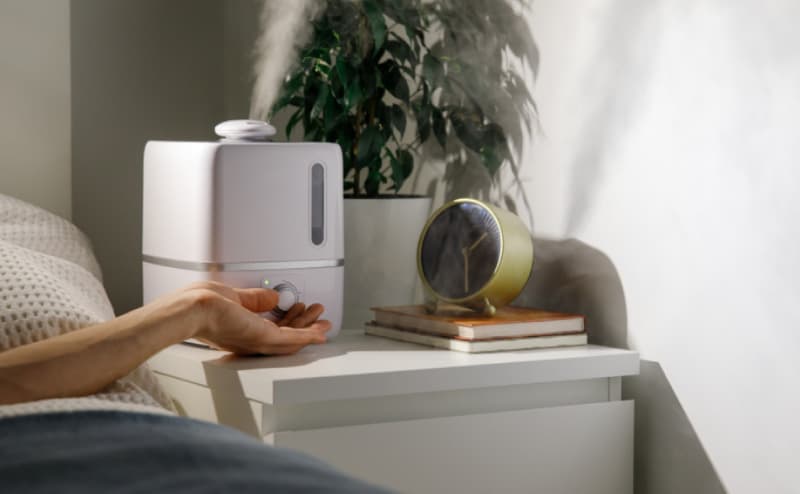
Having dry air in the home can be a real problem. Skin dryness, congested sinuses, nosebleeds and the possibility of issues like bronchitis and sinus infections are oftentimes reasons why people decide to buy a vaporizer or a humidifier to increase the humidity level in their home. Many people mistake these two for being the same thing due to their same purpose – they convert water into gas in order to add more moisture to the air in the home and improve its quality. Bellow, I will walk you through the differences between vaporizers and humidifiers so that you can determine which one will suit your needs best.
Operation
The main difference between vaporisers and humidifiers is the temperature of the mist they emit: vaporizers produce warm mist while humidifiers produce a cool mist. In addition to this basic difference, understanding how these two appliances work and the different types of humidifiers and vaporizers available will help you choose the right option for your needs.
Types of Vaporizers
- Steam Vaporizers – Also known as ‘warm mist humidifiers’ these vaporizers work by boiling the water and then releasing steam and moisture into the air. Vaporisers release cleaner mist compared to cool mist humidifiers as bacteria is eliminated during the heating process. This gives you peace of mind knowing that the mist you are inhaling isn’t contaminated.
- Waterless Vaporizers – This kind releases warm mist as well, but it doesn’t need water to operate. Instead, pre-moistured pads are used which are generally infused with menthol and essential oils.
These vaporizers are less popular and only a few models are available on the market.
Types of Humidifiers
- Evaporative Humidifiers – This humidifier typically uses a fan and a wick filter to operate. The wick filter absorbs the water into the device’s water tank, and the fan blows air toward the wick causing the water to evaporate into a fine mist. One great thing about this humidifier is that it is self-regulating, meaning it won’t produce more mist than necessary.
- Ultrasonic Humidifiers – Using a diaphragm that vibrates at an ultrasonic frequency, this humidifier creates fine water droplets that are released in the form of mist.
Application
Both vaporizers and humidifiers can be used to create a more humid environment. Parents, in particular, use these devices to help their children or infants breathe easier (especially if they suffer from some respiratory disease). They can also be used to relieve allergy symptoms, asthma, and even bronchitis. A lot of people choose vaporizers over humidifiers because they often come with medicine cups that allow them to add medicinal inhalants to the steam, making them ideal for treating cough and cold symptoms.
Ideally, vaporizers and humidifiers should be used in shared living spaces where the entire family will be able to benefit from them. To maximize their benefits, the ideal spots to keep them are on the bedside table or somewhere in your bedroom.











